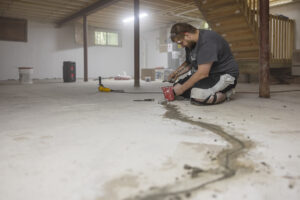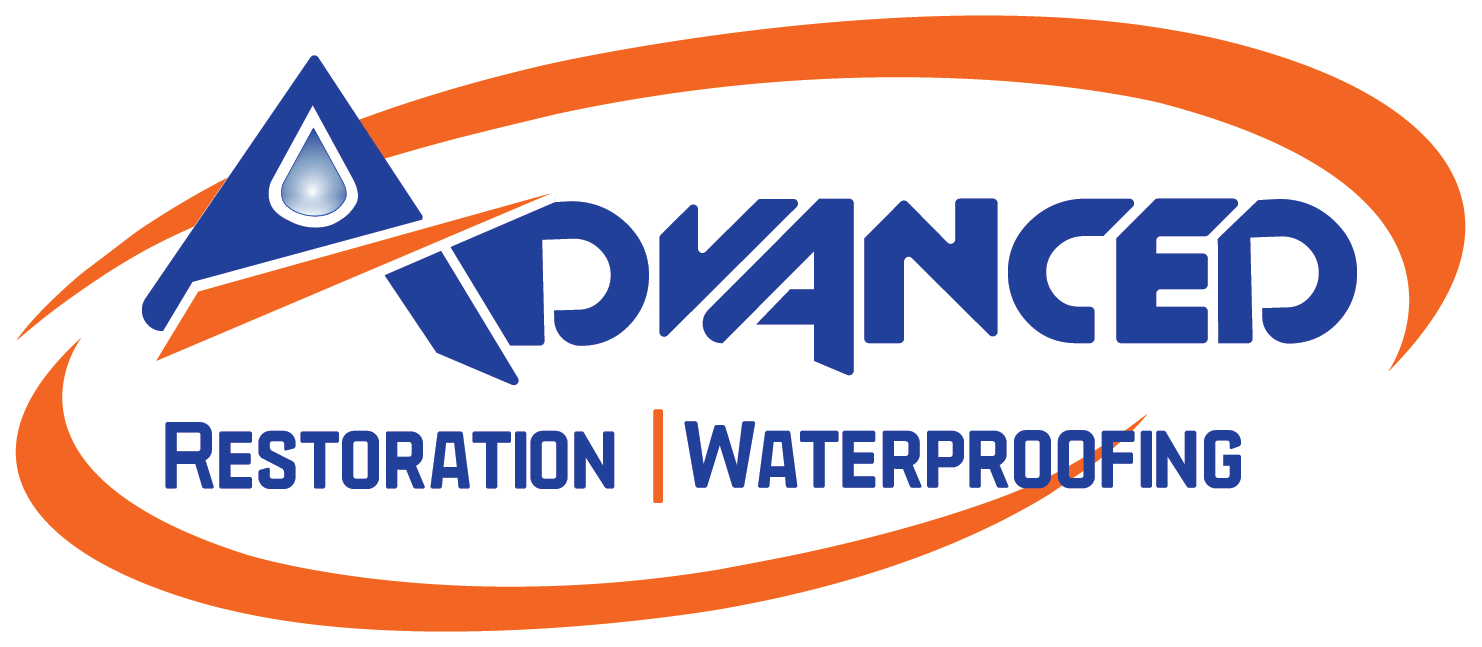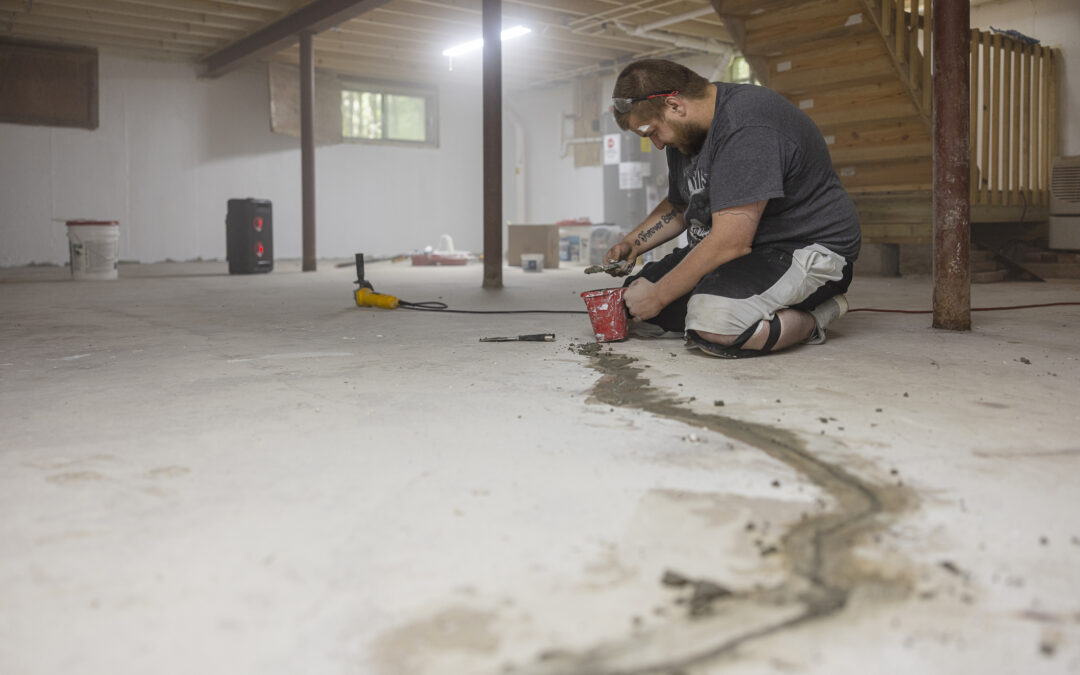Fall is the perfect time to ensure your home is ready for the upcoming wet and cold weather. A thorough fall maintenance checklist can help keep your home dry, safe, and comfortable throughout the season. Here’s a comprehensive checklist to help you prepare your home for fall, covering essential areas like basement waterproofing, crawlspace and foundation restoration, and drainage solutions.
Inspect and Clean Gutters and Downspouts
Remove Debris: The first step in maintaining your gutters and downspouts is to remove any accumulated debris. Leaves, twigs, and other materials can easily clog these drainage systems, leading to water overflow and potential damage to your home’s foundation. Regularly cleaning out this debris ensures that water can flow freely, reducing the risk of overflow and subsequent damage.
Check for Damage: After clearing the debris, it is essential to inspect your gutters and downspouts for any signs of damage or sagging. Look for cracks, holes, rust spots, or sections that have come loose. Damaged or sagging gutters and downspouts can hinder proper water flow, leading to leaks and water damage. Repair or replace any damaged sections to maintain the integrity of your home’s drainage system.
Ensure Proper Drainage: Lastly, make sure that your downspouts are directing water away from your home’s foundation. Ideally, downspouts should extend at least 5-10 feet away from the house to prevent water from pooling near the foundation. Water pooling near your home can seep into the basement or crawlspace, causing significant structural damage and creating a conducive environment for mold growth. By ensuring proper drainage, you protect your home from potential water damage and maintain a dry, safe living environment.
Roof Inspection and Maintenance
Check for Damaged Shingles: Regular roof inspections are vital to maintaining your home’s integrity, especially before the rainy fall season. Begin by inspecting your roof for any damaged shingles. Look for missing, cracked, or curling shingles, as these can be entry points for water. Damaged shingles compromise the roof’s ability to shed water effectively, leading to potential leaks and water damage. Replace any damaged shingles promptly to ensure your roof remains watertight.
Examine Flashing: The next step in roof maintenance on our Fall maintenance checklist. is to examine the flashing. Flashing is the material placed around chimneys, vents, and skylights to prevent water from seeping into your home. Over time, flashing can deteriorate, becoming a common source of leaks. Ensure that all flashing is intact and properly sealed. If you notice any gaps, cracks, or rust, it’s crucial to repair or replace the flashing to maintain a solid barrier against water intrusion.
Clean Roof Valleys: Roof valleys, where two roof slopes meet, are particularly susceptible to water buildup and leaks. Debris such as leaves, branches, and dirt can accumulate in these valleys, obstructing water flow and causing water to pool. This standing water can eventually lead to leaks and damage. Regularly clean out roof valleys to ensure they are free from debris and can effectively channel water off your roof. By keeping these areas clear, you reduce the risk of water damage and prolong the life of your roof.
Check Off Basement Waterproofing on Your Fall Maintenance Checklist
Inspect for Leaks: A dry basement is crucial for maintaining the overall health of your home. Begin your waterproofing efforts by thoroughly inspecting your basement for any signs of water leaks, dampness, or mold. Look for wet spots on the walls or floor, peeling paint, or musty odors, which can indicate moisture problems. Early detection of these issues is vital to prevent further damage. Address any leaks or damp areas promptly to avoid structural damage and the potential health hazards associated with mold growth.
Seal Cracks: Once you’ve identified any problem areas, the next step is to seal any cracks or gaps in the basement walls and floor. Even small cracks can allow water to seep in, leading to significant damage over time. Use a high-quality waterproof sealant to fill these openings. This will create a barrier that prevents water from entering your basement, keeping it dry and reducing the risk of water damage. Regularly check for new cracks and reseal as necessary to maintain this protective layer.

Install a Sump Pump: A sump pump is an essential component of a comprehensive basement waterproofing strategy. Ensure that your sump pump is in good working condition by testing it regularly. A well-maintained sump pump can efficiently remove any water that accumulates in your basement, preventing flooding and water damage. Additionally, consider installing a battery backup system to keep your sump pump running during power outages. This added layer of protection ensures that your basement remains dry even during severe weather conditions when the risk of flooding is highest.
Crawlspace and Foundation Restoration
Inspect Crawlspace: Maintaining a dry and healthy crawlspace is essential for the overall integrity of your home. Begin by thoroughly inspecting your crawlspace for signs of moisture, mold, or pests. Dampness or standing water in the crawlspace can lead to mold growth and attract pests, which can damage your home’s structure and impact indoor air quality. Ensure that any vents in the crawlspace are clear and functioning properly to promote adequate ventilation. Proper ventilation helps to keep the crawlspace dry and reduces the risk of mold and mildew development.
Install Vapor Barrier: To further protect your home from moisture, consider installing a vapor barrier on the crawlspace floor. A vapor barrier is a plastic or foil sheet that covers the ground, preventing moisture from the soil from rising into the crawlspace. This barrier helps to keep the crawlspace dry, reducing the risk of mold growth and wood rot. By installing a vapor barrier, you create an additional layer of protection against moisture intrusion, contributing to a healthier and more stable home environment.
Check Foundation: A solid foundation is crucial for the structural stability of your home. Regularly inspect your foundation for any cracks or signs of settling. Cracks in the foundation can allow water to seep into your home, leading to water damage and compromising the structural integrity of the building. If you notice any issues, it’s important to address them promptly with professional foundation repair. Professional repair services can accurately assess the extent of the damage and provide effective solutions to prevent further deterioration and water intrusion. By maintaining a strong foundation, you ensure the long-term stability and safety of your home.
Exterior Maintenance
Seal Exterior Walls: Maintaining the integrity of your home’s exterior walls is essential for keeping moisture out. Start by inspecting the exterior walls for any cracks or gaps. Even small openings can allow water to penetrate, leading to potential water damage and mold growth inside your home. Use a high-quality waterproof sealant to fill any cracks or gaps you find. Sealing these openings creates a barrier that prevents water from entering, ensuring that your home stays dry and protected from the elements.
Maintain Paint and Siding: The paint and siding on your home serve as the first line of defense against weather and moisture. Regularly check the condition of your exterior paint and siding. Look for any peeling, cracking, or damaged areas. Repairing or repainting these areas not only enhances the aesthetic appeal of your home but also protects it from water damage and rot. Well-maintained paint and siding can effectively shield your home from harsh weather conditions, prolonging the lifespan of the exterior surfaces.
Clean and Repair Chimneys: Chimneys can be a source of water intrusion if not properly maintained. Clean out any debris, such as leaves or bird nests, that may have accumulated in the chimney when going through your Fall maintenance checklist. Inspect the chimney for any cracks or structural damage. Cracks in the chimney can allow water to seep into your home, causing damage to the interior walls and ceilings. Repair any issues you find to ensure the chimney is watertight. By keeping your chimney clean and in good repair, you prevent water from entering your home through this vulnerable point, ensuring a dry and safe living environment.
Window and Door Inspection on Your Fall Maintenance Checklist
Check Seals and Caulking: Properly sealed windows and doors are crucial for maintaining energy efficiency and preventing water intrusion. Begin by inspecting the seals and caulking around your windows and doors. Over time, weatherstripping and caulking can deteriorate, allowing drafts and water leaks. Replace any worn or damaged weatherstripping to ensure a tight seal around windows and doors. Use a high-quality caulking material to fill any gaps or cracks in the seals. This helps to prevent air leakage and keeps moisture from entering your home, contributing to a comfortable and dry indoor environment.
Inspect for Damage: In addition to checking seals and caulking, thoroughly inspect windows and doors for any signs of damage or deterioration. Look for cracks, rot, or warping in the frames and sashes. Damaged components compromise the structural integrity of windows and doors, making them less effective in keeping out drafts and moisture. Repair or replace any damaged parts to maintain a secure and weather-tight seal. By addressing these issues promptly, you ensure that your windows and doors provide optimal protection against the elements, enhancing both the comfort and energy efficiency of your home.
Yard and Drainage Solutions
Grade Landscaping: Properly grading your landscaping is essential to prevent water from pooling near your home’s foundation. Ensure that the ground slopes away from the foundation in all directions. This slope directs rainwater and runoff away from your home, reducing the risk of water seeping into the basement or crawlspace. Regularly check the grading around your home and make adjustments as needed to maintain effective drainage away from the foundation.
Install French Drains: In areas where water tends to accumulate, such as low-lying spots or near downspouts, consider installing French drains or other drainage solutions. French drains are underground trenches filled with gravel and a perforated pipe that helps redirect water away from problem areas. These drains effectively manage excess water, preventing it from saturating the soil around your home’s foundation and potentially causing structural damage. Consult with a professional to determine the best drainage solution for your specific landscaping and water management needs.
Clear Debris: Regular maintenance of yard drains is crucial to ensure they function properly during heavy rainfall, which is why it is an important part of this Fall maintenance checklist. Clear leaves, twigs, and other debris from yard drains and gutters to prevent clogs that can lead to water backup and flooding. Inspect drains regularly to ensure they are clear and free-flowing. By keeping yard drains clean and maintained, you help prevent water from pooling near your home and mitigate the risk of water damage to your property.
Fall Maintenance Checklist for Interior Preparation
Check Attic Insulation: Inspecting the insulation in your attic is crucial for maintaining energy efficiency and preventing issues like ice dams during winter. Adequate insulation helps to retain heat within your home, reducing heating costs and ensuring consistent indoor temperatures. Check for any signs of damaged or compressed insulation and replace or add insulation as needed to maintain optimal thermal performance.
 Inspect Plumbing: Regularly inspecting your plumbing system helps to identify and address potential leaks or drips before they escalate into larger problems. Check all visible pipes for signs of corrosion, leaks, or water stains. Insulate exposed pipes in unheated areas, such as crawlspaces or garages, to prevent them from freezing during colder months. Proper insulation not only protects your plumbing but also conserves water and reduces the risk of burst pipes during freezing temperatures.
Inspect Plumbing: Regularly inspecting your plumbing system helps to identify and address potential leaks or drips before they escalate into larger problems. Check all visible pipes for signs of corrosion, leaks, or water stains. Insulate exposed pipes in unheated areas, such as crawlspaces or garages, to prevent them from freezing during colder months. Proper insulation not only protects your plumbing but also conserves water and reduces the risk of burst pipes during freezing temperatures.
Test Smoke and Carbon Monoxide Detectors: Smoke and carbon monoxide detectors are essential for the safety of your household. Regularly test all detectors to ensure they are functioning correctly. Press the test button on each detector and listen for the alarm sound. Replace batteries annually or as needed, and consider replacing detectors that are more than 10 years old, as their effectiveness may diminish over time. Ensuring that smoke and carbon monoxide detectors are in good working condition provides early detection of potential hazards, allowing you to take prompt action to protect your family and home.
By following this fall maintenance checklist, you can ensure that your home remains dry, safe, and comfortable throughout the season. Regular maintenance not only protects your property but also helps maintain its value and provides peace of mind. Take the time to prepare your home now, and enjoy a worry-free fall season. If you encounter any issues while completing your maintenance checklist, need assistance with your home maintenance tasks, or wish to consult with experts, don’t hesitate to contact us! We’re here to help ensure your home stays dry, safe, and in top condition throughout the fall season.


